Economy
Turkey has the world's 13th largest GDP by PPP[256] and 17th largest nominal GDP.[257] The country is among the founding members of the OECD and the G-20.[175][181]
The EU – Turkey Customs Union in 1995 led to an extensive liberalisation of tariff rates, and forms one of the most important pillars of Turkey's foreign trade policy.[258] Turkey's exports were $143.5 billion in 2011 and reached $163 billion in 2012 (main export partners in 2012: Germany 8.6%, Iraq 7.1%, Iran 6.5%, UK 5.7%, UAE 5.4%). However, larger imports which amounted to $229 billion in 2012 threatened the balance of trade (main import partners in 2012: Russia 11.3%, Germany 9%, China 9%, US 6%, Italy 5.6%).[11]
Turkey has a sizeable automotive industry, which produced over 1.3 million motor vehicles in 2015, ranking as the 14th largest producer in the world.[259] Turkish shipbuilding exports were worth US$1.2 billion in 2011.[260] The major export markets are Malta, Marshall Islands, Panama and the United Kingdom. Turkish shipyards have 15 floating docks of different sizes and one dry dock.[260] Tuzla, Yalova, and İzmit have developed into dynamic shipbuilding centres.[261] In 2011, there were 70 active shipyards in Turkey, with another 56 being built.[261] Turkish shipyards are highly regarded both for the production of chemical and oil tankers up to 10,000 dwt and also for their mega yachts.[261]
Turkish brands like Beko and Vestel are among the largest producers of consumer electronics and home appliances in Europe, and invest a substantial amount of funds for research and development in new technologies related to these fields.[262][263][264]
Other key sectors of the Turkish economy are banking, construction, home appliances, electronics, textiles, oil refining, petrochemical products, food, mining, iron and steel, and machine industry. In 2010, the agricultural sector accounted for 9 percent of GDP, while the industrial sector accounted for 26 percent and the services sector for 65 percent.[11] However, agriculture still accounted for a quarter of employment.[265] In 2004, it was estimated that 46 percent of total disposable income was received by the top 20 percent of income earners, while the lowest 20 percent received only 6 percent.[266] The rate of female employment in Turkey was 30 percent in 2012,[267] the lowest among all OECD countries.[268]
Foreign direct investment (FDI) was $8.3 billion in 2012, a figure expected to rise to $15 billion in 2013.[269] In 2012, Fitch Group upgraded Turkey's credit rating to investment grade after an 18-year gap;[270] this was followed by a ratings upgrade by Moody's in May 2013, as the service lifted Turkey's government bond ratings to the lowest investment grade Baa3.[271][272] In September 2016, Moody's cut Turkey's sovereign debt to junk status.[273] In the economic crisis of 2016 it emerged that the huge debts incurred for investment during the Justice and Development Party (AKP) government since 2002 had mostly been consumed in construction, rather than invested in sustainable economic growth.[274] Private bank debts in Turkey were 6.6 billion TL in 2002 and had increased to 385 billion TL by the end of 2015.[274] Turkey's gross external debt reached $453.2 billion at the end of December 2017.[275] Turkey's annual current account deficit was $47.3 billion at the end of December 2017, compared to the previous year's figure of $33.1 billion.[276]
History
In the early decades of the Turkish Republic, the government (or banks established and owned by the government, such as Türkiye İş Bankası (1924), Sanayi ve Maadin Bankası (1925), Emlak ve Eytam Bankası (1926), Central Bank of Turkey (1930), Sümerbank (1933), İller Bankası (1933), Etibank (1935), Denizbank (1937), Halk Bankası (1938), etc.) had to subsidise most of the industrial projects, due to the lack of a strong private sector. However, in the period between the 1920s and 1950s, a new generation of Turkish entrepreneurs such as Nuri Demirağ, Vehbi Koç, Hacı Ömer Sabancı and Nejat Eczacıbaşı began to establish privately owned factories, some of which evolved into the largest industrial conglomerates that dominate the Turkish economy today, such as Koç Holding, Sabancı Holding and Eczacıbaşı Holding.
During the first six decades of the republic, between 1923 and 1983, Turkey generally adhered to a quasi-statist approach with strict government planning of the budget and government-imposed limitations over foreign trade, flow of foreign currency, foreign direct investment and private sector participation in certain fields (such as broadcasting, telecommunications, energy, mining, etc.). However, in 1983, Prime Minister Turgut Özalinitiated a series of reforms designed to shift the economy from a statist, insulated system to a more private-sector, market-based model.[112]
The reforms, combined with unprecedented amounts of funding from foreign loans, spurred rapid economic growth; but this growth was punctuated by sharp recessions and financial crises in 1994, 1999 (following the earthquake of that year),[277] and 2001;[278] resulting in an average of 4 percent GDP growth per annum between 1981 and 2003.[279] Lack of additional fiscal reforms, combined with large and growing public sector deficits and widespread corruption, resulted in high inflation, a weak banking sector and increased macroeconomicvolatility.[280] Since the economic crisis of 2001 and the reforms initiated by the finance minister of the time, Kemal Derviş, inflation has dropped to single-digit figures for the first time in decades (8% in 2005), investor confidence and foreign investment have soared, and unemployment has fallen (10% in 2005).[281]
Turkey has gradually opened up its markets through economic reforms by reducing government controls on foreign trade and investment and the privatisation of publicly owned industries, and the liberalisation of many sectors to private and foreign participation has continued amid political debate.[282] The public debt-to-GDP ratio peaked at 75.9 percent during the recession of 2001, falling to an estimated 26.9 percent by 2013.[283]
The real GDP growth rate from 2002 to 2007 averaged 6.8 percent annually,[284] which made Turkey one of the fastest growing economies in the world during that period. However, growth slowed to 1 percent in 2008, and in 2009 the Turkish economy was affected by the global financial crisis, with a recession of 5 percent. The economy was estimated to have returned to 8 percent growth in 2010.[11] According to Eurostat data, Turkish GDP per capita adjusted by purchasing power standard stood at 52 percent of the EU average in 2011.[285]
In the early years of the 21st century, the chronically high inflation was brought under control; this led to the launch of a new currency, the Turkish new lira (Yeni Türk Lirası) in 2005, to cement the acquisition of the economic reforms and erase the vestiges of an unstable economy.[286] In 2009, after only four years in circulation, the Turkish new lira was renamed back to the Turkish lira with the introduction of new banknotes and coins (and the withdrawal of the Turkish new lira banknotes and coins that were introduced in 2005), but the ISO 4217 code of the Turkish new lira (TRY) remains in use for the current Turkish lira in the foreign exchange market.
Tourism
Tourism in Turkey has experienced rapid growth in the last twenty years, and constitutes an important part of the economy. The Turkish Ministry of Culture and Tourism currently promotes Turkish tourism under the Turkey Home name. At its height in 2014, Turkey attracted around 42 million foreign tourists, ranking as the 6th most popular tourist destination in the world.[287] This number however declined to around 36 million in 2015, deteriorated to around 25 million in 2016[288][289] and still further in 2017,[290] due to regional uncertanities, political tension with Russia, terrorist attacks[291] and the unfavorable Erdoğan regime image abroad.[289][292] In 2012, 15 percent of the tourists were from Germany, 11 percent from Russia, 8 percent from the United Kingdom, 5 percent from Bulgaria, 4 percent each from Georgia, the Netherlands and Iran, 3 percent from France, 2 percent each from the United States and Syria, and 40 percent from other countries.[293]
Turkey has 17 UNESCO World Heritage Sites, such as the "Historic Areas of Istanbul", the "Rock Sites of Cappadocia", the "Neolithic Site of Çatalhöyük", "Hattusa: the Hittite Capital", the "Archaeological Site of Troy", "Pergamon and its Multi-Layered Cultural Landscape", "Hierapolis – Pamukkale", and "Mount Nemrut";[294] and 51 World Heritage Sites in tentative list, such as the archaeological sites or historic urban centres of Göbekli Tepe, Gordion, Ephesus, Aphrodisias, Perga, Lycia, Sagalassos, Aizanoi, Zeugma, Ani, Harran, Mardin, Konya and Alanya.[295] Turkey is home to two of the Seven Wonders of the Ancient World, the world's oldest religious site, and numerous other World Heritage Sites.[296][297][298]
Infrastructure
In 2013 there were 98 airports in Turkey,[303] including 22 international airports.[304] As of 2015, Istanbul Atatürk Airport is the 11th busiest airport in the world, serving 31,833,324 passengers between January and July 2014, according to Airports Council International.[305] The new (third) international airport of Istanbul is planned to be the largest airport in the world, with a capacity to serve 150 million passengers per annum.[306][307][308] Turkish Airlines, flag carrier of Turkey since 1933, was selected by Skytrax as Europe's best airline for five consecutive years in 2011, 2012, 2013, 2014 and 2015.[300][301][309] With 435 destinations (51 domestic and 384 international) in 126 countriesworldwide, Turkish Airlines is the largest carrier in the world by number of countries served as of 2016.[302]
As of 2014, the country has a roadway network of 65,623 kilometres (40,776 miles).[311] The total length of the rail network was 10,991 kilometres (6,829 miles) in 2008, including 2,133 kilometres (1,325 miles) of electrified and 457 kilometres (284 miles) of high-speed track.[312][313] The Turkish State Railways started building high-speed rail lines in 2003. The Ankara-Konya line became operational in 2011, while the Ankara-Istanbul line entered service in 2014.[313] Opened in 2013, the Marmaray tunnel under the Bosphorus connects the railway and metro lines of Istanbul's European and Asian sides; while the nearby Eurasia Tunnel (2016) provides an undersea road connection for motor vehicles.[314] The Bosphorus Bridge (1973), Fatih Sultan Mehmet Bridge (1988) and Yavuz Sultan Selim Bridge (2016) are the three suspension bridges connecting the European and Asian shores of the Bosphorus strait. The Osman Gazi Bridge (2016) connects the northern and southern shores of the Gulf of İzmit. The planned Çanakkale Bridge will connect the European and Asian shores of the Dardanelles strait.
In 2008, 7,555 kilometres (4,694 mi) of natural gas pipelines and 3,636 kilometres (2,259 mi) of petroleum pipelines spanned the country's territory.[312] The Baku-Tbilisi-Ceyhan pipeline, the second longest oil pipeline in the world, was inaugurated on 10 May 2005.[315] The Blue Stream, a major trans-Black Sea gas pipeline, delivers natural gas from Russia to Turkey. A planned undersea pipeline, Turkish Stream, with an annual capacity around 63 billion cubic metres (2,200 billion cubic feet), will allow Turkey to resell Russian gas to Europe while planned Nabucco pipeline will reduce European dependence on Russian energy.[316]
Turkey's internet, which has 42.3 million active users, holds a 'Not Free' ranking in Freedom House's index.[317] Turkish government has constantly blocked websites like Facebook, Twitter, YouTube and Wikipedia, the latter being currently inaccessible from Turkey.[318] According to Twitter's transparency report, Turkey is the global leader in social media censorship.[319]
In 2013, the energy consumption was 240 billion kilowatt hours.[324] As Turkey imported 72 percent of its energy in 2013, the government decided to invest in nuclear power to reduce imports.[324]Three nuclear power stations are to be built by 2023.[324] Turkey's first nuclear power plants are planned to be built in Mersin's Akkuyu district on the Mediterranean coast; in Sinop's İnceburundistrict on the Black Sea coast; and in Kırklareli's İğneada district on the Black Sea coast.[325] Turkey has the fifth highest direct utilisation and capacity of geothermal power in the world.[326] Turkey is a partner country of the EU INOGATE energy programme, which has four key topics: enhancing energy security, convergence of member state energy markets on the basis of EU internal energy market principles, supporting sustainable energy development, and attracting investment for energy projects of common and regional interest.[327]
Water supply and sanitation in Turkey is characterised by achievements and challenges. Over the past decades access to drinking water has become almost universal and access to adequate sanitation has also increased substantially. Autonomous utilities have been created in the 16 metropolitan cities of Turkey and cost recovery has been increased, thus providing the basis for the sustainability of service provision. Intermittent supply, which was common in many cities, has become less frequent. In 2004, 61% of the wastewater collected through sewers was being treated. Remaining challenges include the need to further increase wastewater treatment, to reduce the high level of non-revenue water hovering around 50% and to expand access to adequate sanitation in rural areas. The investment required to comply with EU standards in the sector, especially in wastewater treatment, is estimated to be in the order of €2 billion per year, more than double the current level of investment.[328]
Science and technology
TÜBİTAK is the leading agency for developing science, technology and innovation policies in Turkey.[330] TÜBA is an autonomous scholarly society acting to promote scientific activities in Turkey.[331] TAEK is the official nuclear energy institution of Turkey. Its objectives include academic research in nuclear energy, and the development and implementation of peaceful nuclear tools.[332]
Turkish government companies for research and development in military technologies include Turkish Aerospace Industries, Aselsan, Havelsan, Roketsan, MKE, among others. Turkish Satellite Assembly, Integration and Test Center (UMET) is a spacecraft production and testing facility owned by the Ministry of National Defence and operated by the Turkish Aerospace Industries (TAI). The Turkish Space Launch System (UFS) is a project to develop the satellite launch capability of Turkey. It consists of the construction of a spaceport, the development of satellite launch vehicles as well as the establishment of remote earth stations.[333][334][335] Türksat is the sole communications satellite operator in Turkey and has launched the Türksat series of satellites into orbit. Göktürk-1 and Göktürk-2 are Turkey's earth observation satellites for reconnaissance, operated by the Ministry of National Defence. BILSAT-1 and RASATare the scientific earth observation satellites operated by the TÜBİTAK Space Technologies Research Institute.
In 2015, Aziz Sancar, a Turkish professor at the University of North Carolina, won the Nobel Chemistry Prize along with Tomas Lindahl and Paul Modrich, for their work on how cells repair damaged DNA.[336] Other notable Turkish scientists include physician Hulusi Behçet who discovered Behçet's disease, and mathematician Cahit Arf who defined the Arf invariant.
Demographics
| Historical populations | ||
|---|---|---|
| Year | Pop. | ±% p.a. |
| 1927 | 13,554,000 | — |
| 1930 | 14,440,000 | +2.13% |
| 1940 | 17,728,000 | +2.07% |
| 1950 | 20,807,000 | +1.61% |
| 1960 | 27,506,000 | +2.83% |
| 1970 | 35,321,000 | +2.53% |
| 1980 | 44,439,000 | +2.32% |
| 1990 | 55,120,000 | +2.18% |
| 2000 | 64,252,000 | +1.54% |
| 2010 | 73,003,000 | +1.29% |
| 2017 | 79,815,000 | +1.28% |
| Source: Turkstat[337] | ||
According to the Address-Based Population Recording System of Turkey, the country's population was 74.7 million people in 2011,[338] nearly three-quarters of whom lived in towns and cities. According to the 2011 estimate, the population is increasing by 1.35 percent each year. Turkey has an average population density of 97 people per km². People within the 15–64 age group constitute 67.4 percent of the total population; the 0–14 age group corresponds to 25.3 percent; while senior citizens aged 65 years or older make up 7.3 percent.[339] In 1927, when the first official census was recorded in the Republic of Turkey, the population was 13.6 million.[340] The largest city in Turkey, Istanbul, is also the largest city in Europe in population, and the third-largest city in Europe in terms of size.[341][342]
Article 66 of the Turkish Constitution defines a "Turk" as "anyone who is bound to the Turkish state through the bond of citizenship"; therefore, the legal use of the term "Turkish" as a citizen of Turkey is different from the ethnic definition.[344] However, the majority of the Turkish population are of Turkish ethnicity. They are estimated at 70–75 percent.[11] Reliable data on the ethnic mix of the population is not available, because Turkish census figures do not include statistics on ethnicity.[345] The three "Non-Muslim" minority groups recognised in the Treaty of Lausanne were Armenians, Greeks and Jews. Other ethnic groups include Albanians, Assyrians, Bosniaks, Circassians, Georgians and Lazs, Kurds, Pomaks (Bulgarians), Roma.[346][347]
The Kurds are the largest non-Turkic ethnicity, around 18–25 percent of the population.[11][348] Kurds are concentrated in the east and southeast of the country, in what is also known as Turkish Kurdistan, making up a majority in the provinces of Tunceli, Bingöl, Muş, Ağrı, Iğdır, Elâzığ, Diyarbakır, Batman, Şırnak, Bitlis, Van, Mardin, Siirt and Hakkari, a near majority in Şanlıurfa province (47%), and a large minority in Kars province (20%).[349] In addition, due to internal migration, Kurdish communities exist in all major cities in central and western Turkey, particularly in Istanbul, where there are an estimated 3 million Kurds, making Istanbul the city with the largest Kurdish population in the world.[350] The minorities besides the Kurds are thought to make up an estimated 7–12 percent of the population.[11]
Minority groups other than the three religious minorities recognized in the Treaty of Lausanne (Armenians, Greeks and Jews) do not have any official rights, and the use of minority languages is restricted.[351] The term "minority" itself remains a sensitive issue in Turkey, while the Turkish government is frequently criticised for its treatment of minorities.[351]Although minorities are not recognised, state-run Turkish Radio and Television Corporation (TRT) broadcasts television and radio programs in minority languages.[352][353] Also, some minority language classes can be chosen in elementary schools.[354]
An estimated 2.5 percent of the population are international migrants.[355] Turkey hosts the largest number of refugees in the world, including more than 2.8 million Syrian refugees, as of January 2017.[356]
| Rank | Name | Province | Pop. | Rank | Name | Province | Pop. | ||
|---|---|---|---|---|---|---|---|---|---|
 Istanbul  Ankara | 1 | Istanbul | Istanbul | 13,820,334 | 11 | Kayseri | Kayseri | 880,255 |  İzmir  Bursa |
| 2 | Ankara | Ankara | 4,474,305 | 12 | Eskişehir | Eskişehir | 670,544 | ||
| 3 | İzmir | İzmir | 2,828,927 | 13 | Gebze | Kocaeli | 582,352 | ||
| 4 | Bursa | Bursa | 1,769,752 | 14 | Urfa | Şanlıurfa | 551,511 | ||
| 5 | Adana | Adana | 1,645,965 | 15 | Denizli | Denizli | 540,000 | ||
| 6 | Gaziantep | Gaziantep | 1,465,019 | 16 | Samsun | Samsun | 523,192 | ||
| 7 | Konya | Konya | 1,138,609 | 17 | Kahramanmaraş | Kahramanmaraş | 458,628 | ||
| 8 | Antalya | Antalya | 1,027,551 | 18 | Adapazarı | Sakarya | 449,290 | ||
| 9 | Diyarbakır | Diyarbakır | 906,013 | 19 | Malatya | Malatya | 425,000 | ||
| 10 | Mersin | Mersin | 898,813 | 20 | Erzurum | Erzurum | 381,104 | ||
Languages
The country's official language is Turkish, which is spoken by 85.54 percent of the population as first language.[359] 11.97 percent of the population speaks the Kurmanji dialect of Kurdish as mother tongue.[359] Arabic and Zaza are the mother tongues of 2.39 percent of the population, and several other languages are the mother tongues of smaller parts of the population.[359] Endangered languages in Turkeyinclude Abaza, Abkhaz, Adyghe, Cappadocian Greek, Gagauz, Hértevin, Homshetsma, Kabard-Cherkes, Ladino (Judesmo), Laz, Mlahso, Pontic Greek, Romani, Suret, Turoyo, Ubykh, and Western Armenian.[360]
Religion
Turkey is a secular state with no official state religion; the Turkish Constitution provides for freedom of religion and conscience.[362][363]
According to Ipsos,[361] in 2016 Islam was the major religion in Turkey, adhered to by 82% of the total population, followed by religiously unaffiliated people who comprised 13% of the population, and Christians with 2%.
The role of religion in public life has been a controversial debate over the years since the formation of Islamist parties.[364] For many decades, the wearing of the hijab was banned in schools and government buildings because it was viewed as a symbol of political Islam. However, the ban was lifted from universities in 2011, from government buildings in 2013,[365] from schools in 2014,[366] and from the Armed Forces in 2017.[367] The government of Tayyip Erdoğan and the Justice and Development Party (AKP) pursue the explicit policy agenda of Islamization of education to "raise a devout generation" against secular resistance,[368][369] in the process causing lost jobs and school for many non-religious citizens of Turkey.[370]
Islam
There are no official statistics of people's religious beliefs nor is it asked in the census. According to the government, 99.8%[II] of the Turkish population is Muslim;[11][373] other sources have given estimates ranging from as much as 96.4 percent[347] to as low as 82 percent.[361] The most popular sect is the Hanafi school of Sunni Islam. There are also some Sufi Muslims.[374] Non-denominational Muslims have been estimated to range from 2 percent[375] to 14 percent of the population.[361]
The highest Islamic religious authority is the Presidency of Religious Affairs (Turkish: Diyanet İşleri Başkanlığı); it interprets the Hanafi school of law, and is responsible for regulating the operation of the country's 80,000 registered mosques and employing local and provincial imams.[376]Some have also complained (see cite) that under the Islamist government of the Justice and Development Party (AKP) and Tayyip Erdoğan, the old role of the Diyanet – maintaining control over the religious sphere of Islam in Turkey – has "largely been turned on its head".[377] Now greatly increased in size, the Diyanet promotes a certain type of conservative (Hanafi Sunni) Islam inside Turkey, issuing fetva which disapprove activities such as "feeding dogs at home, celebrating the western New Year, lotteries, and tattoos";[378] and projecting this "Turkish Islam"[377] abroad.[379]
Academics suggest the Alevi population may be from 15 to 20 million, while the Alevi-Bektaşi Federation claims that there are around 25 million[380][381] and according to Aksiyon magazine, the number of Shiite Twelvers (excluding Alevis) is 3 million (4.2 percent).[382] Under the Sunni Islamist government of the Justice and Development Party (AKP) and Tayyip Erdoğan, an increasing discrimination against and persecution of the Alevi minority has begun.[383][384][385]
According to WIN-Gallup International's Global Index of Religiosity and Atheism project,[386] Turkey is the country with most irreligious Muslims in the Islamic world, forming 73% of its Muslim population. According to PEW Global research, only 15% of Muslims in Turkey say prayers for at least one of the five prayers either at home or in a mosque.[387] Another PEW Report suggests that, only 7% to 13% of all Turks think that religion should have an effect on laws directly or indirectly.[388]
Christianity
Christianity has a long history in present-day Turkey, which is the birthplace of numerous Christian Apostles and Saints, such as Paul of Tarsus, Timothy, Nicholas of Myra, Polycarp of Smyrna and many others. Saint Peter founded one of the first churches in Antioch (Antakya), the location of which is regarded by tradition as the spot where he first preached the Gospel, and where the followers of Jesus were called Christians for the first time in history. The house where Virgin Mary lived the final days of her life until her Assumption (according to Catholicdoctrine) or Dormition (according to Orthodox belief),[389][390] and the tomb of John the Apostle who accompanied her during the voyage to Anatolia after the crucifixion of Jesus, are in Ephesus. The cave churches in Cappadocia were among the hiding places of early Christians during the Roman persecutions against them. The Eastern Orthodox Church has been headquartered in Constantinople (Istanbul) since the First Council of Constantinople in 381 AD.[391][392] Two of the five major episcopal sees of the Pentarchy (Constantinople and Antioch) instituted by Justinian the Great in 531 AD[393] were located in present-day Turkey during the Byzantine period.[394]
The percentage of Christians in Turkey fell from 17.5%, 3 million, (19% non-Muslim) in a population of 16 million to 2.5% percent in 1927,[395]due to events which had a significant impact on the country's demographic structure, such as the Armenian Genocide, the population exchange between Greece and Turkey,[396] and the emigration of Christians that actually began in the late 19th century and gained pace in the first quarter of the 20th century.[397] The Wealth Tax on non-Muslims in 1942, the emigration of a portion of Turkish Jews to Israel after 1948, and the ongoing Cyprus disputewhich damaged the relations between Turks and Greeks (culminating in the Istanbul pogrom of 6–7 September 1955) were other important events that contributed to the decline of Turkey's non-Muslim population.
Today there are more than 120,000 people of different Christian denominations, representing less than 0.2 percent of Turkey's population,[398] including an estimated 80,000 Oriental Orthodox, 35,000 Roman Catholics,[399] 18,000 Antiochian Greeks,[400] 5,000 Greek Orthodox, and smaller numbers of Protestants.[401] Currently there are 236 churches open for worship in Turkey.[402]
Judaism
The history of Judaism in Turkey goes back to the Romaniote Jews of Anatolia who have been present since at least the 5th century BC. They built ancient places of worship such as the Sardis Synagogue in Lydia and the Priene Synagogue in Ionia. The Sephardi Jews who were expelled from the Iberian peninsula and southern Italy under the control of the Spanish Empire were welcomed into the Ottoman Empire between the late-15th and mid-16th centuries. Despite emigration during the 20th century, modern-day Turkey continues to have a small Jewish population.[403] At present, there are around 26,000 Jews in Turkey, the vast majority of whom are Sephardi.[404]
Agnosticism and atheism
According to a 2010 Eurobarometer poll 94% of Turks believed in God while only 1% did not. This indicates that 5% of the population are agnostic with another 1% being explicitly atheist.[405] However, according to another poll by KONDA the percentage of atheism is 2.9%.[406]Atheism Association of Turkey, the first official atheist organisation in Balkans, Caucasus and Middle East, was founded in 2014.[372][407]
Recent polls suggest that 4.5 million people were irreligious in 2013. The same data also suggests that 85% of all irreligious people are younger than 35.[408]
Education
The Ministry of National Education is responsible for pre-tertiary education.[410] This is compulsory and lasts twelve years: four years each of primary school, middle school and high school.[411] Less than half of 25- to 34-year-old Turks have completed at least high school, compared with an OECD average of over 80 percent.[412] Basic education in Turkey is considered to lag behind other OECD countries, with significant differences between high and low performers.[413] Turkey is ranked 32nd out of 34 in the OECD's PISA study.[411] Access to high-quality school heavily depends on the performance in the secondary school entrance exams, to the point that some students begin taking private tutoring classes when they are 10 years old.[413] The overall adult literacy rate in 2011 was 94.1 percent; 97.9 percent for males and 90.3 percent for females.[414]
As of 2017, there are 190 universities in Turkey.[415] Entry to higher education depends on the Student Selection and Placement System(ÖSYS). In 2008, the quota of admitted students was 600,000, compared to 1,700,000 who took the higher education exam in 2007.[416]Except for the Open Education Faculties (AÖF) at Anadolu, Istanbul and Atatürk University; entrance is regulated by the national ÖSYS examination, after which high school graduates are assigned to universities according to their performance.[417] According to the 2012–2013 Times Higher Education World University Rankings, the top university in Turkey is Middle East Technical University (in the 201–225 rank range), followed by Bilkent University and Koç University (both in the 226–250 range), Istanbul Technical University and Boğaziçi University(in the 276–300 bracket).[418] All state and private universities are under the control of the Higher Education Board (YÖK), whose head is appointed by the President of Turkey; executive order 676 of October 2016 has created a system where in addition the President directly appoints all rectors of all state and private universities.[419] Turkey is a member of the European Higher Education Area and actively participates in the Bologna Process.[420]
In 2016 the Skills Matter survey conducted by OECD found the levels of numeracy and literacy in the adult population of Turkey at rank 30 of the 33 OECD countries surveyed. [421]
In 2017 the theory of evolution was removed from the national curriculum in favour of teaching on the concept of jihad.[422]
Healthcare
Health care in Turkey used to be dominated by a centralised state system run by the Ministry of Health. In 2003, the government introduced a sweeping health reform programme aimed at increasing the ratio of private to state health provision and making healthcare available to a larger share of the population. Turkish Statistical Institute announced that 76.3 billion TL was spent for healthcare in 2012; 79.6 percent of which was covered by the Social Security Institution and 15.4 percent of which was paid directly by the patients.[423] In 2012, there were 29,960 medical institutions in Turkey,[424] and on average one doctor per 583 people[425] and 2.65 beds per 1000 people.[424]
In 2015, life expectancy was 72.6 years for men and 78.9 for women, with an overall average of 75.8.[426]
Culture
Turkey has a very diverse culture that is a blend of various elements of the Turkic, Anatolian, Ottoman (which was itself a continuation of both Greco-Roman and Islamic cultures) and Western culture and traditions, which started with the Westernisation of the Ottoman Empire and still continues today. This mix originally began as a result of the encounter of Turks and their culture with those of the peoples who were in their path during their migration from Central Asia to the West.[428][429] Turkish culture is a product of efforts to be a "modern" Western state, while maintaining traditional religious and historical values.[428]
Visual arts
Turkish painting, in the Western sense, developed actively starting from the mid 19th century. The very first painting lessons were scheduled at what is now the Istanbul Technical University (then the Imperial Military Engineering School) in 1793, mostly for technical purposes.[430] In the late 19th century, human figure in the Western sense was being established in Turkish painting, especially with Osman Hamdi Bey. Impressionism, among the contemporary trends, appeared later on with Halil Pasha. The young Turkish artists sent to Europe in 1926 came back inspired by contemporary trends such as Fauvism, Cubism and even Expressionism, still very influential in Europe. The later "Group D" of artists led by Abidin Dino, Cemal Tollu, Fikret Mualla, Fahrünnisa Zeid, Bedri Rahmi Eyüboğlu, Adnan Çoker and Burhan Doğançay introduced some trends that had lasted in the West for more than three decades. Other important movements in Turkish painting were the "Yeniler Grubu" (The Newcomers Group) of the late 1930s; the "On'lar Grubu" (Group of Ten) of the 1940s; the "Yeni Dal Grubu" (New Branch Group) of the 1950s; and the "Siyah Kalem Grubu" (Black Pen Group) of the 1960s.[431]
Carpet weaving represents a traditional art, dating back to pre-Islamic times. During its long history, the art and craft of the woven carpet has integrated different cultural traditions. Traces of Byzantine design can be detected, Turkic peoples migrating from Central Asia, as well as Armenian people, Caucasian and Kurdic tribes either living in, or migrating to Anatolia, brought with them their traditional designs. The arrival of Islam and the development of the Islamic art also influenced Turkish carpet design. The history of its designs, motifs and ornaments thus reflects the political and ethnic history and diversity of the area of Asia minor. However, scientific attempts were unsuccessful, as yet, to attribute a particular design to a specific ethnic, regional, or even nomadic versus village tradition.[433]
Turkish miniature is an art form, which can be linked to the Persian miniature tradition, as well as strong Chinese artistic influences. The words taswir or nakish were used to define the art of miniature painting in Ottoman Turkish. The studios the artists worked in were called Nakkashanes.[434] The miniatures were usually not signed, perhaps because of the rejection of individualism, but also because the works were not created entirely by one person; the head painter designed the composition of the scene, and his apprentices drew the contours (which were called tahrir) with black or colored ink and then painted the miniature without creating an illusion of third dimension. The head painter, and much more often the scribe of the text, were indeed named and depicted in some of the manuscripts. The understanding of perspective was different from that of the nearby European Renaissance painting tradition, and the scene depicted often included different time periods and spaces in one picture. They followed closely the context of the book they were included in, resembling more illustrations rather than standalone works of art.[435]
The earliest examples of Turkish paper marbling are thought to be a copy of the Hâlnâme by the poet Arifî. The text of this manuscript was rendered in a delicate cut paper découpage calligraphy by Mehmed bin Gazanfer and completed in 1540, and features many marbled and decorative paper borders. One early master by the name of Şebek is mentioned posthumously in the earliest Ottoman text on the art known as the Tertib-i Risâle-i Ebrî, which is dated based on internal evidence to after 1615. Several recipes in the text are accredited to this master. Another famous 18th-century master by the name of Hatip Mehmed Efendi (died 1773) is accredited with developing motifs and perhaps early floral designs, although evidence from India appears to contradict some of these claims. Despite this, marbled motifs are commonly referred to as "Hatip" designs in Turkey today.[436]
Literature and theatre
Turkish literature is a mix of cultural influences. Interaction between the Ottoman Empire and the Islamic world along with Europe contributed to a blend of Turkic, Islamic and European traditions in modern-day Turkish music and literary arts.[438] Turkish literature was heavily influenced by Persian and Arabic literature during most of the Ottoman era. The Tanzimat reforms introduced previously unknown Western genres, primarily the novel and the short story. Many of the writers in the Tanzimat period wrote in several genres simultaneously: for instance, the poet Nâmık Kemal also wrote the important 1876 novel İntibâh (Awakening), while the journalist Şinasi is noted for writing, in 1860, the first modern Turkish play, the one-act comedy "Şair Evlenmesi" (The Poet's Marriage). Most of the roots of modern Turkish literature were formed between the years 1896 and 1923. Broadly, there were three primary literary movements during this period: the Edebiyat-ı Cedîde (New Literature) movement; the Fecr-i Âtî (Dawn of the Future) movement; and the Millî Edebiyat (National Literature) movement. The first radical step of innovation in 20th century Turkish poetry was taken by Nâzım Hikmet, who introduced the free verse style. Another revolution in Turkish poetry came about in 1941 with the Garip movement led by Orhan Veli, Oktay Rıfat and Melih Cevdet. The mix of cultural influences in Turkey is dramatised, for example, in the form of the "new symbols of the clash and interlacing of cultures" enacted in the novels of Orhan Pamuk, recipient of the 2006 Nobel Prize in Literature.[439]
The origin of Turkish theatre dates back thousands of years to ancient pagan rituals. The dances, music and songs performed during the rituals of the inhabitants of Anatolia millennia ago are the elements from which the first shows originated. These rituals later became theatrical shows. In the 10th century, a blend of traditions occurred between the Seljuk Turks and those of the inhabitants of Anatolia. The interaction between the various tribal societies paved the way for new plays. After the Tanzimat (Reformation) period, characters in Turkish theatre were modernized and plays were performed on European-style stages with the actors wearing European costumes. Following the declaration of the second Constitutional Monarchy in 1908, theatrical activities increased and social problems began to be reflected in the theatre as well as in historical plays. A theatrical conservatoire, Darülbedayi-i Osmani, was established in Istanbul in 1914. During the years of chaos and war, the Darülbedayi-i Osmani continued its activities and attracted the younger generation. Turkish playwrights emerged. Some wrote on romantic subjects, others were interested in social problems and still others dealt with nationalistic themes. There were even those who wrote musicals. In time, Turkish ladies began to appear on stage and this was indeed a revolution of the time, since female roles had only been played by actresses who were members of Turkey’s ethnic minorities. Today, theatre acts are performed by numerous private theatre companies and subsidized companies such as the Turkish State Theatres.[440]
Music and dance
Music of Turkey includes mainly Turkic elements as well as partial influences ranging from Central Asian folk music, Arabic music, Greek music, Ottoman music, Persian music and Balkan music, as well as references to more modern European and American popular music. The roots of traditional music in Turkey span across centuries to a time when the Seljuk Turks migrated to Anatolia and Persia in the 11th century and contains elements of both Turkic and pre-Turkic influences. Much of its modern popular music can trace its roots to the emergence in the early 1930s drive for Westernization.[442]
With the assimilation of immigrants from various regions the diversity of musical genres and musical instrumentation also expanded. Turkey has also seen documented folk music and recorded popular music produced in the ethnic styles of Greek, Armenian, Albanian, Polish and Jewish communities, among others.[443]
Many Turkish cities and towns have vibrant local music scenes which, in turn, support a number of regional musical styles. Despite this however, western-style music styles like pop music and kanto lost popularity to arabesque in the late 70s and 80s. It became popular again by the beginning of the 1990s, as a result of an opening economy and society. With the support of Sezen Aksu, the resurging popularity of pop music gave rise to several international Turkish pop stars such as Tarkan and Sertab Erener. The late 1990s also saw an emergence of underground music producing alternative Turkish rock, electronica, hip-hop, rap and dance music in opposition to the mainstream corporate pop and arabesque genres, which many believe have become too commercial.[447]
Turkey has a diverse folkloric dance culture. Hora is performed in East Thrace; Zeybek in the Aegean Region, Southern Marmara and East-Central Anatolia Region; Teke in the Western Mediterranean Region; Kaşık Oyunları and Karşılama in West-Central Anatolia, Western Black Sea Region, Southern Marmara Region and Eastern Mediterranean Region; Horon in the Central and Eastern Black Sea Region; Halay in Eastern Anatolia and the Central Anatolia Region; and Bar and Lezginka in the Northeastern Anatolia Region.[448]
Architecture
The architecture of the Seljuk Turks combined the elements and characteristics of the Turkic architecture of Central Asia with those of Persian, Arab, Armenian and Byzantine architecture. The transition from Seljuk architecture to Ottoman architecture is most visible in Bursa, which was the capital of the Ottoman State between 1335 and 1413. Following the Ottoman conquest of Constantinople (Istanbul) in 1453, Ottoman architecture was significantly influenced by Byzantine architecture. Topkapı Palace in Istanbul is one of the most famous examples of classical Ottoman architecture and was the primary residence of the Ottoman Sultans for approximately 400 years.[449] Mimar Sinan (c.1489–1588) was the most important architect of the classical period in Ottoman architecture. He was the chief architect of at least 374 buildings which were constructed in various provinces of the Ottoman Empire in the 16th century.[450]
Since the 18th century, Turkish architecture has been increasingly influenced by European styles, and this can be particularly seen in the Tanzimat era buildings of Istanbul like the Dolmabahçe, Çırağan, Feriye, Beylerbeyi, Küçüksu, Ihlamur and Yıldız palaces, which were all designed by members of the Balyan family of Ottoman court architects.[451] The Ottoman era waterfront houses (yalı) on the Bosphorus also reflect the fusion between classical Ottoman and European architectural styles during the aforementioned period. The First National Architectural Movement (Birinci Ulusal Mimarlık Akımı) in the early 20th century sought to create a new architecture, which was based on motifs from Seljuk and Ottoman architecture. The movement was also labelled Turkish Neoclassical or the National Architectural Renaissance.[452]The leading architects of this movement were Vedat Tek (1873–1942), Mimar Kemaleddin Bey (1870–1927), Arif Hikmet Koyunoğlu (1888–1982) and Giulio Mongeri (1873–1953).[453] Notable buildings from this era are the Grand Post Office in Istanbul (1905–1909), Tayyare Apartments (1919–1922),[454] Istanbul 4th Vakıf Han (1911–1926),[455] State Art and Sculpture Museum (1927–1930),[456] Ethnography Museum of Ankara (1925–1928),[457] the first Ziraat Bank headquarters in Ankara (1925–1929),[458] the first Türkiye İş Bankası headquarters in Ankara (1926–1929),[459] Bebek Mosque,[460] and Kamer Hatun Mosque.[461][462]
Cuisine
Turkish cuisine is regarded as one of the most prominent in the world, its popularity is largely owed to the cultural influences of the Ottoman Empire and partly because of its major tourism industry. It is largely the heritage of Ottoman cuisine, which can be described as a fusion and refinement of Central Asian, Caucasian, Middle Eastern, Mediterranean and Balkan cuisines.[465] The country's position between the East and the Mediterranean Sea helped the Turks gain complete control of major trade routes, and an ideal environment allowed plants and animals to flourish. Turkish cuisine was well established by the mid-1400s, the beginning of the Ottoman Empire's six hundred-year reign. Yogurt salads, fish in olive oil, and stuffed and wrapped vegetables became Turkish staples. The empire, eventually spanning from Austria to northern Africa, used its land and water routes to import exotic ingredients from all over the world. By the end of the 16th century, the Ottoman court housed over 1,400 live-in cooks and passed laws regulating the freshness of food. Since the fall of the empire in World War I (1914–1918) and the establishment of the Turkish Republic in 1923, foreign food such as French hollandaise sauce and western fast food have made their way into the modern Turkish diet.[466]
Sports
The most popular sport in Turkey is association football (soccer).[467] Galatasaray won the UEFA Cup and UEFA Super Cup in 2000.[468] The Turkish national football team has won the bronze medal at the 2002 FIFA World Cup, the 2003 FIFA Confederations Cup and UEFA Euro 2008.[469]
Other mainstream sports such as basketball and volleyball are also popular. The men's national basketball team won the silver medal at the 2010 FIBA World Championship and at the EuroBasket 2001, which were both hosted by Turkey. The basketballing team is one of the most successful in the Mediterranean Games. Turkish basketball club Fenerbahçe played the Final of the EuroLeague in three consecutive seasons (2016, 2017 and 2018), becoming the European champions in 2017 and runners-up in 2016 and 2018. Another Turkish basketball club, Anadolu Efes S.K. won the 1995–96 FIBA Korać Cup, won silver at the 1992–93 FIBA Saporta Cup, and won bronze at the Euroleagueand Suproleague in 2000 and 2001.[470][471] Beşiktaş won the 2011–12 FIBA EuroChallenge,[472] and Galatasaray won the 2015–16 Eurocup. The final of the 2013–14 EuroLeague Women basketball championship was played between two Turkish teams, Galatasaray and Fenerbahçe, and won by Galatasaray.[473] The women's national basketball team won the silver medal at the EuroBasket Women 2011 and the bronze medal at the EuroBasket Women 2013. Along with the men's team the women's team is one of the most successful in the Mediterranean Games.
The women's national volleyball team won the gold medal at the 2015 European Games, the silver medal at the 2003 European Championship, the bronze medal at the 2011 European Championship, and the bronze medal at the 2012 FIVB World Grand Prix. They also won multiple medals over multiple decades at the Mediterranean Games.[474] Women's volleyball clubs, namely Fenerbahçe, Eczacıbaşı and Vakıfbank, have won numerous European championship titles and medals. Fenerbahçe won the 2010 FIVB Women's Club World Championshipand the 2012 CEV Women's Champions League. Representing Europe as the winner of the 2012–13 CEV Women's Champions League, Vakıfbank also became the world champion by winning the 2013 FIVB Volleyball Women's Club World Championship. Recently Vakıfbank has won the 2017 FIVB Volleyball Women's Club World Championship[475][476][477] and the 2017–18 CEV Women's Champions League for the fourth time in their history.[478]
The traditional national sport of Turkey has been yağlı güreş (oil wrestling) since Ottoman times.[479] Edirne has hosted the annual Kırkpınar oiled wrestling tournament since 1346, making it the oldest sporting competition in the world.[480] International wrestling styles governed by FILA such as freestyle wrestling and Greco-Roman wrestling are also popular, with many European, World and Olympic championship titles won by Turkish wrestlers both individually and as a national team.[481]



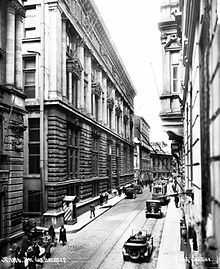


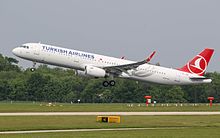
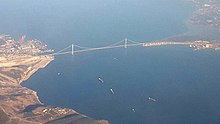





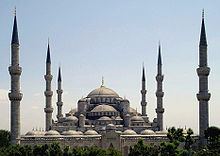
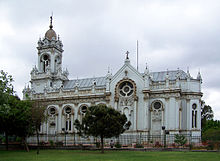
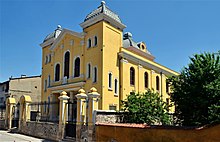


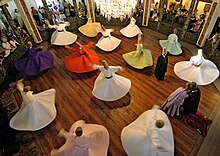
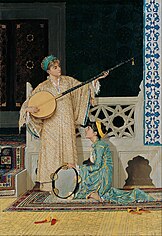








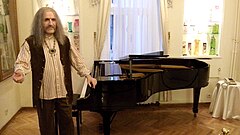





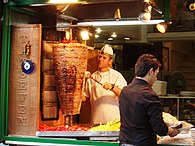





Hiç yorum yok:
Yorum Gönder